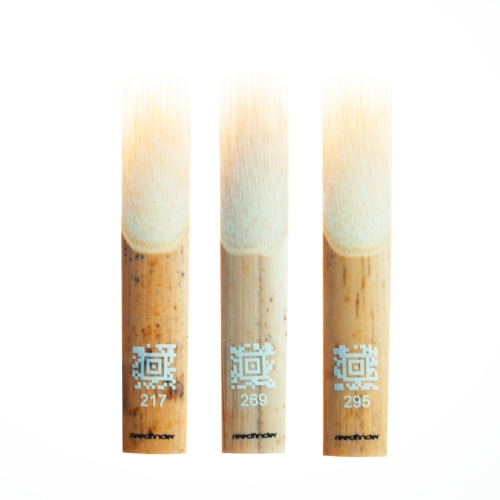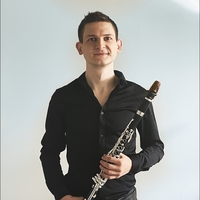The Clarinet: History, Types and Genres
The clarinet is a single-reed woodwind instrument that has a distinctive timbre and a wide range of pitches. It is used in various styles of music, such as classical, jazz, klezmer, and marching bands.
The Origins of the Clarinet
The clarinet is a relatively new instrument compared to other woodwinds. It was invented in the early 18. century by a German instrument maker named Johann Christoph Denner. He based his clarinet on an earlier instrument called the chalumeau, which looked much like a recorder with a single reed mouthpiece. The chalumeau was a simple instrument that had a limited range and a weak tone.
Denner improved the chalumeau by adding a register key, which allowed the player to produce higher notes by overblowing. He also lengthened the instrument and added keys to improve the tuning and the range. He called his new instrument the clarinetto, which means “little trumpet” in French. At the end of the 18th century, the role of the clarinet began to change. Composers began to prefer using the lower ranges of the clarinet, and the earlier bright tones were replaced by warmer tones that were also suitable for expressing much deeper emotions. Perhaps the greatest pioneer in this field was Wolfgang Amadeus Mozart (1756-1791), who wrote his most famous work for clarinet in this way, the A major clarinet concerto. This also motivated later composers to use the entire range of the clarinet.
Related article:
The Different Types of Clarinets
The clarinet family is very diverse and includes instruments of many different sizes and pitches. Some of the most common types of clarinets are:
- B♭ Clarinet: The Bb clarinet, also known as the soprano clarinet, is the most widely used and versatile clarinet in the world. It is often the first clarinet that beginners learn to play. It has a wide range and a warm and rich tone. It is used in many styles of music, such as classical, jazz, klezmer, and military bands.
A Clarinet: The choice for symphony and orchestral music. The A clarinet is slightly longer than the Bb clarinet and is tuned to the key of A. It has a darker sound compared to the Bb clarinet, making it ideal for symphony and orchestral music. The A clarinet is often used in combination with the Bb clarinet to add depth and richness to the overall sound. It is similar in construction to the Bb clarinet, but with a longer body. There is no additional fingerings or technique to learn compared to the Bb clarinet.
- E♭ Clarinet: This is a smaller and higher-pitched clarinet. It has a bright and piercing tone that can cut through loud orchestral textures. It is often used for solo parts or special effects in classical music, such as in Berlioz, Symphonie Fantastique, The Rite of Spring by Igor Stravinsky or Mahler Symphony n.9
- Bass Clarinet: This is a larger and lower-pitched clarinet that sounds about an octave below the B♭ soprano clarinet. It has a deep and mellow tone that can add richness and depth to the lower register of the ensemble. It is used in classical music, jazz, film music, and contemporary music as well.
Contrabass Clarinet: The rare and powerful member of the clarinet family. The contrabass clarinet is the largest and lowest-pitched member of the clarinet family. It is an extremely rare instrument that is not commonly found. The contrabass clarinet is tuned to the key of Bb and produces a powerful and resonant sound that can be felt in the chest. The contrabass clarinet is a massive instrument, standing over 6 feet tall when fully assembled. It has a curved neck and a bell that points upwards. The instrument requires exceptional breath control and physical strength to produce sound.
- Basset Horn: This is a type of alto clarinet that produces an F when a C is played. It has a curved metal neck and a metal bell. It has a dark and melancholic tone that is well suited for expressive music. It was a favorite instrument of Wolfgang Amadeus Mozart, who wrote several pieces for it, such as his Clarinet Concerto and his Requiem.
There are also other types of clarinets that are less common, such as the contrabass clarinet, the contra-alto clarinet, the alto clarinet, the basset clarinet, the C clarinet, and the D clarinet. Each of these instruments has its own unique characteristics and uses.
The Role of the Clarinet - Genres
Classical Music
One of the first classical composers to write for the clarinet was Wolfgang Amadeus Mozart, who was fascinated by the instrument’s ability to imitate the human voice. He wrote several works for the clarinet, including his Clarinet Concerto in A major (K. 622), Clarinet Quintet in A major (K. 581), and Clarinet Trio in E♭ major (K. 498). Mozart’s clarinet works are considered some of the finest examples of classical music and showcase the clarinet’s lyrical and virtuosic potential.
Another composer who wrote extensively for the clarinet was Johannes Brahms, who was inspired by his friendship with Richard Mühlfeld, a German clarinetist. Brahms composed four chamber works for the clarinet: two sonatas (Op. 120), a trio (Op. 114), and a quintet (Op. 115). These works are characterized by their rich harmonies, complex textures, and emotional depth.
Other notable composers who wrote for the clarinet include Igor Stravinsky, who used the instrument in his groundbreaking ballets The Firebird (1910), Petrushka (1911), and The Rite of Spring (1913), as well as his neoclassical works such as his Octet for Wind Instruments (1923) and his Three Pieces for Clarinet Solo (1919); Carl Maria von Weber, who composed two concertos (Op. 73 and Op. 74) and a concertino (Op. 26) for the clarinet, as well as his operas Der Freischütz (1821) and Oberon (1826), which feature prominent clarinet parts; and Claude Debussy, who wrote his Première Rhapsodie (1910) for clarinet and piano or orchestra, as well as his Petite Pièce (1910) for clarinet and piano.
Jazz
Jazz is a musical genre that originated in the African American communities of New Orleans in the late 19th and early 20th centuries. Jazz is characterized by its use of syncopation, swing, blues, improvisation, and complex harmonies. Jazz music incorporates elements of various musical traditions, such as ragtime, blues, gospel, folk, and classical music.
The clarinet was one of the first instruments to be used in jazz music, especially in the early styles of New Orleans jazz and Dixieland jazz. The clarinet’s agility and expressive tone made it suitable for playing fast and intricate melodies, as well as creating polyphonic textures with other instruments. The clarinet also added a distinctive color and contrast to the brass-dominated jazz bands.
Some of the famous jazz clarinetists include Sidney Bechet, who was one of the first jazz soloists and a pioneer of soprano saxophone and clarinet; Benny Goodman, who was known as the “King of Swing” and led one of the most popular and influential big bands in the 1930s and 1940s; Artie Shaw, who was another swing bandleader and clarinet virtuoso who experimented with different musical genres and styles; Woody Herman, who was a clarinetist, saxophonist, singer, and bandleader who led various incarnations of his band called the “Herd”; Buddy DeFranco, who was one of the first clarinetists to play bebop and modern jazz; Jimmy Giuffre, who was a clarinetist, saxophonist, composer, and arranger who explored various forms of jazz, such as cool jazz, free jazz, and folk jazz; and Eddie Daniels, who is a contemporary clarinetist who plays both classical and jazz music with equal mastery.
Klezmer
Klezmer is a musical tradition of the Ashkenazi Jews of Eastern Europe that originated in the Middle Ages. The word klezmer comes from the Hebrew words kley zemer, meaning “musical instruments”. Klezmer music is based on old European dance tunes, religious melodies, and folk songs that reflect the Jewish culture and history. Klezmer music is often played at weddings and other celebrations, where the musicians improvise and interact with the audience.
The clarinet became a prominent instrument in klezmer music in the late 19th and early 20th centuries, when many Jewish musicians migrated to America and adopted the instrument from local bands. The clarinet’s expressive range and ability to imitate the human voice made it ideal for klezmer music, which often uses vocal techniques such as glissandi, bends, growls, and ornaments. The clarinet also added a distinctive timbre and color to the klezmer ensemble, which usually consists of violin, accordion, cimbalom, bass, and percussion.
Some of the famous klezmer clarinetists include:
Naftule Brandwein, who was known for his virtuosic and flamboyant style;
Dave Tarras, who was considered the “king of klezmer” and influenced many generations of musicians;
Giora Feidman, who popularized klezmer music worldwide and incorporated elements of classical, jazz, and world music;
David Krakauer, who is a leading figure in the contemporary klezmer scene and explores new forms of expression and fusion;
Don Byron, who is a jazz clarinetist who also plays klezmer music with his own twist;
Margot Leverett, who is a classical clarinetist who also performs traditional and modern klezmer music.
Techniqual Aspects of the Clarinet
The Cylindrical Bore
The clarinet is usually made of African blackwood, also known as grenadilla, which is a dense and resonant wood that can withstand changes in temperature and humidity. Some clarinets are also made of metal, plastic, or other materials, but they are less common.
The clarinet has a cylindrical bore that gives it a distinctive timbre, different from other woodwind instruments. It acts acoustically as a stopped pipe, which produces mainly odd-numbered harmonics. The clarinet has three main registers: the chalumeau register, which is the lowest and warmest; the clarion register, which is the middle and brightest; and the altissimo register, which is the highest and most difficult to play.
The cylindrical bore also affects the way the clarinet overblows: when the player presses a thumb key to open a hole at the back of the instrument, the clarinet produces a note that is a twelfth (an octave plus a fifth) higher than the fundamental note. This is different from other woodwind instruments that overblow at an octave.
The Key Mechanism
The clarinet has many holes on its body that are covered by metal keys that can be opened or closed by pressing levers with the fingers. The keys allow the player to play notes that are not possible with just finger holes. The keys also make it easier to play fast passages and chromatic scales. The most common type of key system on modern clarinets is called the Boehm system, which was developed by French instrument maker Theobald Boehm in the 19th century. Another type of key system that is still used in some countries, especially Germany and Austria, is called the Oehler system.
Most asked
There are many different types of clarinets, each with its own unique sound. The most common type of clarinet is the Bb soprano clarinet. Other types of clarinets include the Eb alto clarinet, A clarinet, bass clarinet, and contrabass clarinet.
The range of the clarinet is almost four octaves, from the low E below middle C to the high C6. The exact range of the clarinet can vary depending on the type of clarinet and the player's skill level.
Some famous clarinet players include Benny Goodman, Artie Shaw, Woody Allen. These players have helped to popularize the clarinet and have inspired many other clarinetists.
Do you like this article?
Thanks for your feedback

World’s #1
Reed Recommendation System
We believe every musician deserves a reed that matches their unique style and sound. Each reed is selected with cutting-edge AI and machine learning based on your playing feedback.
Should You Try the Benz-Tec Digital Reed Tester? I've tested it for you!
Check out the best clarinet jokes to brighten your day!
Struggling to hit the right notes? Your instrument might be the culprit! Learn how to fix intonation problems and stay in-tune.
Unleash the full potential of your clarinet with our exclusive care guide. Elevate your playing with tips that ensure your instrument remains in perfect condition.
Here are the top 7 picks of best applications to download for classical musicians. Tuners, Metronomes and more.
Buffet Crampon's latest innovation: the Prodige Pocket Clarinet. Is it really the best instrument for young clarinetists? Check out our review!
Discover the best clarinet mouthpieces! Check out our reviews and recommendations for Bb and Bass clarinet.
Learn the technique of circular breathing. Expert guide with step-by-step instructions and troubleshooting tips for continous breathing.
A groundbreaking innovation of Buffet Carmpon: Clarimate. This is our honest review about its innovative features and real-world performance. Is it for you?
Discover the role of clarinet ligatures in achieving optimal sound and control. Explore various ligature types, materials, and techniques to enhance your clarinet playing experience.

